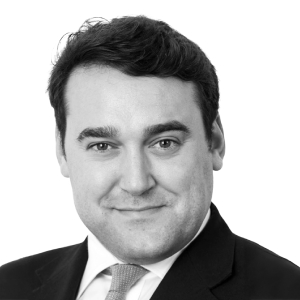Current Macro Fixed Income Environment
The macro fixed income environment is marked by volatility due to concerns about stagflation, tariff discussions, and regulatory uncertainties. Despite these headwinds, the credit markets have shown resilience, with financial institutions capitalizing on historically tight spreads and attractive rates to issue debt and capital product. Issuers and investors alike are navigating this complex landscape with caution.
Following the recent change in the U.S. administration, there was significant optimism with the view that 2025 was going to be the year for growth post what has been a very tepid loan growth environment for the regional banking space. According to Catherine Awong, Managing Director, Debt Capital Markets, Financial Institutions – U.S., “The tone is still very much optimistic, as we heard from our issuers today, but a lot more balanced around risks. Elevated and volatile yields, mixed economic data, stagflation concerns, tariff implications and lack of clarify on the regulatory side have all weighed on sentiment.”
Sentiment on the investor side has been mixed. Tom Criqui, Managing Director, U.S. Investment Grade Syndicate Desk states, “There's been a confluence of factors that have weighed on the market. You've had very heavy corporate bond issuance volumes. You've got historically tight valuations. You've had the significant rally in Treasury rates, where the 10-year has rallied by upwards of 50 basis points, and as a result, you've seen interest rate buyers or rate sensitive buyers, absent from the market of late.” Spreads have also widened and new issue concessions required in the new issue market have become more pronounced. That being said, Criqui says, “The markets are still functioning and are still affording very favorable execution from a valuation standpoint.”
From a European perspective, Peter Riera, Managing Director & Head, Financial Institutions Originations – Europe advises, “The contagion from Silicon Valley Bank and Credit Suisse in Europe was minimal, and the sector emerged, perhaps for the first time since the financial crisis, as something of a comparative safe haven compared to U.S. banks, and this manifested itself in several ways, including in the debt space, seeing European banks outperform some U.S. counterparts at times, and affording, therefore European issuers ongoing access to capital at attractive costs.”
U.S. Dynamics
In the U.S., financial institutions are strategically positioning themselves to take advantage of the current market conditions. The focus is on expanding investor relationships and leveraging strong balance sheets to grow at the enterprise level and within the sphere of debt issuance. The U.S. regional bank sector remains healthy.
Investor engagement has been very high across credits, the capital structure, and tenors, with investors looking for opportunities where they could receive elevated returns by taking calculated risks. According to Awong, “We've seen spreads in (the regional bank) space tighten over 150 basis points since June of 2023 and so, taking all of that into consideration, investor appetite for more structured products has been very high.” Demand is evident when examining growth of the SRT market and private credit. Business Development Company (BDC) issuance saw a record last year and it’s shaping up to be another record year for issuance in the space.
European Dynamics
European banks are actively strengthening their market presence and extending their reach as investors seek to diversify and mitigate risk. There is a high standard of regulation and investor comfort, which has contributed to European banks' ability to outperform some U.S. counterparts at times. European dynamics are characterized by a strategic and cautious approach to regulation, a strong resilience in the face of market volatility, and an active pursuit of investor diversification and optimal debt issuance strategies to capitalize on favorable market conditions.
This is a trend that RBC is also experiencing firsthand. According to Riera, “Diversification is something that in 2025 is becoming more widespread and more deeply ingrained in long-term debt issuance strategies than ever before; and it's something that at RBC Capital Markets we are particularly well placed to advise on with a unique combination of strengths anchored around leadership in North America, with our top 10 U.S. Investment Grade platform and our leadership in the Canadian dollar market, complemented by a leading ranking in the Sterling market, where we're the largest international bank, ranked at number 4 there for many years, and we're also a top 2 player in the Australian dollar kangaroo market. All that is complemented by continuous ongoing investment into Europe, where we recently established a debt syndicate desk in Frankfurt to better connect our clients to German and continental European investors, and also to help us export more European clients, both to the Euro Market and further afield.”
More broadly speaking, “The biggest banks with the largest funding plans are going further afield and diving deeper down into smaller local investors, while even those banks with more modest funding needs are establishing new programs to access new and diverse local markets,” states Riera.
Hybrid Issuance Trends
Hybrid / preferred issuance trends are characterized by a significant increase in activity as issuers capitalize on favorable conditions to issue these securities at historically tight yields spreads. Financial institutions are getting ahead of their funding plans ahead of further potential market volatility. The trend towards issuing longer-dated tenors also reflects a strategic move by sophisticated borrowers to take advantage of historically low spreads.
Awong is seeing this trend play out in real time. “In the last three months, the money centers have issued $22 billion of senior dollar paper in the 20- and 30-year part of the curve. Historically, they've mostly focused in 3-to-10-year tenors, and have been absent from the 30-year part of the curve since, 2021 and early 2022 which were prior cycle tights (in spread). I think it really tells you that our sophisticated bank borrowers are looking to extend duration in this environment.”
With respect to the heightened level of hybrid activity from issuers, Riera states, “In Europe, if we consider what's the most expensive and arguably most strategic part of the bank capital stack, it is that additional Tier 1 debt. We have been on something of a journey with our clients. If I look back to 10 years ago, the focus was on rapidly building up the stock of an issuer's debt in this format. That required us to educate investors on the product, and execute large size quickly in order to meet regulatory requirements. But if I reflect to where we are today in the AT1 product, the conversations we're having are around optimization. It's about, how can we grow and diversify, to the earlier topic, the now well established investor base, how can we use the Debt Capital Markets toolbox, including liability management, to buy back AT1 securities that were issued at a higher cost or are going to be coming up for a call and refinance these securities in the low, incredibly compelling costs that we can achieve across various markets today.”
Forward-Looking Perspectives
Looking ahead, the defining theme is one of cautious optimism, with a balanced view of risks and opportunities. Financial institutions are strategically focusing on diversifying their investor bases and extending the duration of their funding in anticipation of potential market volatility. Financial institutions are adopting a forward-looking approach that balances growth ambitions with risk management, ensuring sustainable expansion and adaptability in a dynamic market.


